Helen H. Moore's Blog, page 340
August 5, 2017
WATCH: An explicit, troubling portrait of race divides Texas town
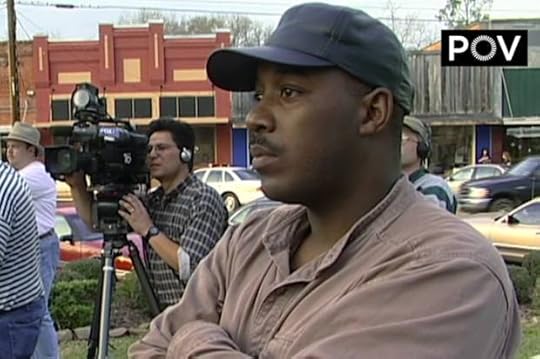
Broken trust, stereotypes, a historically unjust justice system and internal prejudices: These are just some of the issues that both captivated and split the diverse Texas community of Jasper in response to the 1998 murder of James Byrd, Jr., and the trials of his killers.
Byrd, an African-American man, was dragged to his death by a pickup truck driven by three white men. All involved were Jasper locals and avowed white supremacists. The shocking event radiated throughout the town and nation. The ensuing high-stakes trial risked tearing the community apart as simmering mutual distrust between blacks and whites in the Texas town bubbled to the surface.
In 2003, the documentary “Two Towns of Jasper” premiered on POV. Filmmakers Whitney Dow and Marco Williams took to the streets of Jasper during the trials to see what the town had to say. They decided to move forward with an unusual production approach: They’d use segregated crews to cover the story. Williams, who is black, filmed the black community; Dow, who is white, filmed the white community. The resulting portrait in “Two Towns of Jasper” is an explicit accounting of the racial divide in Jasper, and more broadly, America. As part of POV’s 30th anniversary celebration, this important film is being brought back to public media audiences, available on PBS beginning Aug. 14.
Fifteen years after its original broadcast premiere, “Two Towns of Jasper” resonates. While much has changed, systemic racism continues and the threat of violence, particularly to African-American men, remains ever present. We must find ways for individuals, families and communities to talk about the things that divide and unite us. With their innovative filmmaking, Dow and Williams created a film for Jasper, and the rest of America, to reflect and connect. “Two Towns of Jasper” is a timeless examination of American race relations, revealing things that were vaguely understood, but never said.
You can watch the full film, “Two Towns of Jasper,” on POV Monday, Aug. 14, at 10 p.m. on PBS’ POV (check local listings), or stream it online.
Kanye West’s post-Taylor Swift fallout: How he returned from spiritual exile with his masterpiece
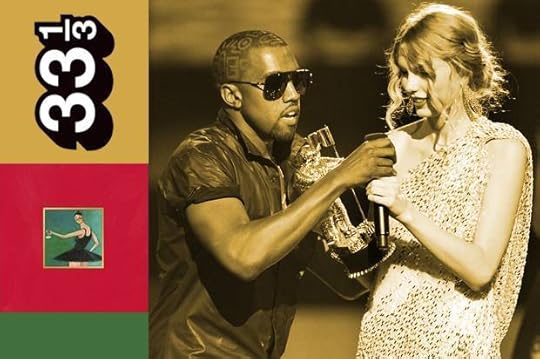
(Credit: Getty/Bloomsbury Publishing)
Throughout his career, one of the most appealing and appalling parts of Kanye’s persona has always been the doubleness of his ego — a weirdly complicated childish streak that charms and disgusts in the space of a single gesture. Watching footage from the infamous 2005 Katrina relief telethon, you can measure the shakiness in his voice with a seismograph. What he wants to do, his shaky voice tells us, is gather up all of the floating corpses and detritus and outrage in New Orleans, smash it into a bolus of righteous indignation, and fling it splattering into the living rooms of an ignorant and apathetic public. What he does is something different. Rather than bear witness to a moment of political courage by a precocious pop star, we see an embarrassingly inarticulate person who, though he yearns to say something meaningful about racial inequality and America’s permanent underclass, talks instead about feeling guilty for shopping. That tension — a struggle between self-rationalized good intentions and reckless execution — is an animating force in West’s life and music. So much so, in fact, that in spite of the status he enjoys as beat maven and rap genius, a plurality of the American public associates his name not with a corpus of inspired baroque rap futurism, but with two high profile and incendiary incidents that occurred during live TV broadcasts. The first of these, call it the “Bush Push” … was an unsolicited verbal sucker punch to a sitting U.S. president. The second incident was, of course, the buffoonish hijacking of Taylor Swift’s acceptance speech at the 2009 MTV Video Music Awards. His intentions were, once again, avowedly noble — you see, he stole Swift’s spotlight to shine it on the more deserving art of someone else (Beyoncé). He was the corrective principle of the pop universe, he was deconstructing the tastelessness of award shows, he was etc, etc, etc. The stunt was a bridge too far. The Taylor Swift brand is a sacred force in the marketplace, an ocean of commodified self-regard for millions upon millions of tweens, teens, and twentysomethings around the world. The outburst was self-destructive on a spectacularly visible scale, and in his usurpation of an otherwise unremarkable moment, he may have permanently alienated an entire generation of women. For those who already found his records distasteful, his antics proved his music to be the bombast of a narcissistic clown, the meretricious noise of a child drunk on his own Kool-Aid. His reputation grew to accommodate a host of social grievances, from incivility to race baiting to celebrity entitlement. The worst moment of his public life got its own meme on the Internet, when people across the globe began digitally superimposing his image on unrelated photos, captioning each one with some variant of his infamous interruption (“Imma let you finish, but. . .”). After an August during which political antagonism over healthcare reform became a blood sport in town hall meetings across the country, Americans found a vital center in their shared disgust at West’s behavior. Watching his stillborn come-to-Jesus moment with Jay Leno a few days after the incident, it was clear that for Kanye West, atonement would require a lot more than penance. It would take a miracle.
More than any other poet of spiritual exile, Dante gave the world its most elegant rationale for taking time to figure shit out: “Midway through the journey of our life / I found myself within a forest dark, / For the straightforward pathway had been lost.” No less than Don Draper, the wayward enigma at the heart of Mad Men, meditates on those first lines from the Inferno while sunning on a beach in the show’s sixth season. And why not? The image endures down through the ages as a catechism of what it means to be human, a sentient and mistake-making creature adrift in the chaos. Given his compulsion for grandiose analogy, and his positive genius for self-deporting from the straightforward path, the image of Dante’s wanderer is a fitting one to describe the state of things for Kanye following the Swift debacle in late 2009.
Complex magazine editor-in-chief Noah Callahan-Bever became a Kanye confidante over the years, and in early 2010 West invited him to spend time at Avex Honolulu Studios in Oahu, where My Beautiful Dark Twisted Fantasy was recorded. Since a prophetic 2002 profile in Mass Appeal magazine (where he describes West as “hip-hop enough to appeal to the most thugged-out cats, but thoughtful enough to resonate with the underground”), Callahan-Bever has charted West’s trajectory through the cultural ecosystem, providing anecdotal glimpses into an inscrutable psyche. For the November 2010 Complex cover story “Project Runaway,” he provides an indispensable eyewitness account of the process by which our era’s most dynamic pop star conceived his magnum opus.
Recounting a phone call with West in mid-October 2009, he writes: “Kanye West was over it, he said. Done with music. He’d clearly needed a break, and his subconscious had manufactured one. Now, he was all about fashion — red leather, gold details, and recapturing the decadence of late-’90s hip-hop in design. While I encouraged his pursuit since he was so obviously enthused, I confessed that it’d be a bummer if he abandoned music altogether.” West was calling from Milan, having left the country following the Leno appearance. He spent a few weeks in Japan before jetting to Rome, where he began an internship at the Italian fashion house Fendi. Reminded of the trying circumstances behind the creation of the Rolling Stones’ greatest LP Exile on Main Street in the south of France, Callahan-Bever admits he was intrigued by the possibilities of Kanye abroad. After a few months with little real communication, he received a brief email in January 2010 from the expat rapper: “Yooooooo, happy new year fam. I can’t wait to play you this new shit!!!!” By late March, Callahan-Bever was “at Avex Honolulu Studios, the seaside recording studio on Oahu where West tracked [fourth studio album] 808s [& Heartbreak]” and where he had block-booked “all three session rooms, 24 hours a day” until he was satisfied that the new album was complete.
One of the joys of reading NCB’s piece is his clear-eyed rendering of both the process and the stakes interwoven in the album’s production. He recounts matter-of-factly the hypomanic rhythms of West’s machinations:
Meanwhile, Kanye stares at his laptop, jumping between email and 15 open windows of art references in his browser. He polls those assembled on how risqué is too risqué for his blog, and occasionally barks mixing orders at the engineer, tuning subtle parts of the beat – all without breaking eye contact from his computer. This is how he works: all-A.D.D. everything.
None of this is surprising to anyone who has listened to the album, which is as much about aesthetic transformations of manic energy as is it is about anything else. “During my five days in Hawaii,” NCB writes, “Kanye never slept at his house, or even in a bed. He would, er, power-nap in a studio chair or couch here and there in 90-minute intervals, working through the night. Engineers remained behind the boards 24 hours a day.” Even more compelling is NCB’s account of the shared awareness among the production’s many players:
But mostly we talk[ed] about Kanye’s album: what it has to mean, and what it has to accomplish. At its heart, beyond the beats or rhymes, this conversation is the reason we were all summoned to the island (no LOST). It’s never explicitly discussed, but everyone here knows that good music is the key to Kanye’s redemption. With the right songs and the right album, he can overcome any and all controversy, and we are here to contribute, challenge, and inspire.
Callahan-Bever expresses an unpretentious wonderment at getting to participate in “Rap Camp,” the playful moniker he gives to his time embedded in the album’s production. Likening the experience to a camp — a clinic put on by some of rap’s leading lights — makes a lot of sense. If you bother to take a census of the dozens of artists, producers, and engineers who worked on MBDTF, it’s easy to forget you’re not looking at the credits of a major motion picture. In addition to the sweeping scope of the production and the vivid after-images etched by its blaze of excess — the undeniable visual dimension of the surplus sonics — MBDTF feels like visual art in other respects, as well. The more one learns about the collaborative intricacies of the production, the more tempting it is to look at Kanye as director, as compositional auteur.
Bridges and roads as important to your health as what’s in your medicine cabinet

FILE - In this March 21, 2016 file photo, the Flint Water Plant water tower is seen in Flint, Mich. The U.S. Environmental Protection Agency said on March 27, 2017, that a $100 million grant to address drinking water issues in the city was approved after a formal application from Michigan state officials. (AP Photo/Carlos Osorio, File) (Credit: AP Photo/Carlos Osorio, File)
Two seemingly unrelated national policy debates are afoot, and we can’t adequately address one unless we address the other.
Health care reform has been the hottest topic. What to do about America’s aging infrastructure has been less animated but may be more pressing.
Yet even as cracks in America’s health system and infrastructure expand, political divides between parties and within parties have stalled efforts to develop policies and implement solutions. Problematically, debates over health care reform and infrastructure projects remain separate.
As a professor of architecture who also studies health equity — the establishment of systems, laws and environments that promote fair access to health care — I believe we have reason to be concerned.
What if a solution to bridging both the political and sectoral divides between health care and infrastructure was, literally, a bridge? Sure, bridges are core elements of infrastructure, but what do bridges have to do with health care?
As it turns out, a lot.
Abroad, substandard infrastructure kills
We have seen the negative effects of poor infrastructure most in poverty-stricken countries.
In October 2016, Haiti saw the importance of bridges. Still reeling from the devastating 2010 earthquakes, the poorest country in the Americas was struck by Hurricane Matthew.
Torrential rains led to contaminated food and water supplies, and, subsequently, a cholera outbreak. They also washed out the bridge over the River La Digue. The collapse broke a link in the primary highway connecting the capital of Port-au-Prince to the southern peninsula of Haiti, the area worst hit by Matthew.
Without road access, medical supplies, water and food rations, community-education programs, and equipment to repair water and sanitation systems could not be delivered. Disease spread further.
Disasters are not the only situations where fractures in infrastructure impact health.
In Uganda — a country with a high prevalence of preventable and treatable illnesses, such as respiratory infections — the “last mile” of the supply chain is a matter of life and death. While effective, low-cost treatments exist, the leading causes of childhood mortality include pneumonia, malaria and diarrheal diseases.
As in the U.S., rural children in Uganda are at a greater risk of death than those living in cities. In fact, children living in the rural northeast region of Karamoja die at more than double the rate of children living in the capital region of Kampala. The health literacy of parents is one factor; access to health facilities is another.
Improving infrastructure, improving health
New research from the University at Buffalo reveals something more striking about the role of supply chains: Many preventable deaths are occurring simply because local clinics and kiosks ran out of supplies.
“In some districts,” according to Biplab Bhattacharya, a Ph.D. student on the team, “only 50 percent of health facilities have regular supplies of ACTs,” a primary treatment for malaria, “and many were vulnerable to stock-outs between deliveries.”
Li Lin, the lead researcher, also noted that retailers who struggle to keep adequate supplies of inexpensive yet lifesaving over-the-counter therapies, like oral rehydration solutions for children with acute diarrhea.
This research comes from a rather unexpected partnership between scholars in industrial and systems engineering who worked with partners in the Clinton Health Access Initiative and the Ministry of Health in Uganda. The work illustrates the value of nontraditional partnerships in identifying problems and finding solutions.
Future public health efforts in Uganda, therefore, may focus not on the development of vaccines or treatments but on infrastructure, such as information management systems, which can predict stock-outs before they happen, and improved roads, which can enable faster delivery of supplies.
US vulnerable, too
While robust technologies shore up America’s supply chains, including the delivery of medications and other health supplies, other areas of infrastructure are not only deteriorating but also do not address imminent, or recurring, public health threats. I fear that America is slowly returning to its status in the early 19th century as a developing nation.
In the late 1800s and early 1900s, cities throughout the U.S. eradicated the spread of waterborne diseases, such as typhoid, by investing in water and sanitation improvements.
However, as the Flint water crisis of 2014 illustrated, America’s infrastructure presents one of the greatest threats to the health of Americans. Michael Beach, associate director for healthy water at the Centers for Disease Control and Prevention, stresses that “the U.S. commitment to bring safe water and sanitation to the country,” in the 19th and 20th centuries, “was a great first step, but we can’t let our guard down; germs adapt.”
Beach adds that outdated infrastructure has contributed to an estimated 240,000 water main breaks each year, and, if not upgraded can “expose users to sewage, pathogens, and other contaminants.”
According to the 2017 Infrastructure Report Card, the average U.S. bridge is 43 years old and there are, on average, 188 million trips each day across structurally deficient American bridges. With each passing car and each passing day, these bridges become more life-threatening.
According to the World Bank, approximately 17 percent of the U.S. GDP goes to health care spending, more than any other country. By contrast, spending on transportation infrastructure amounts to less than 0.4 percent of the country’s GDP. Moreover, during the past decade, health spending has grown, while infrastructure spending has constricted despite the need for upgrades.
While political debates often tie public works projects to economic development and health care policies to human health, infrastructure and health care intersect. Both have economic and health implications. Civic infrastructures — including the seemingly unrelated sectors of energy, transportation and housing — are as important to the health care toolkit as vaccines, hospital beds and surgical units.
For example, over half a million children under the age of five die every year worldwide due to air pollution. Transportation-related smog is one contributor, which is why cities with the best transportation systems often have a lower incidence of respiratory diseases. Investments in transit not only improve convenience and access but also reduce governments’, and individuals’, burden of treating otherwise preventable diseases.
Of course, infrastructure spending is not immune to political roadblocks. Questions regarding how to resource a plan, which projects to prioritize and how to award contracts present challenges. New approaches to funding might be legislation on improving health infrastructure, like the construction and renovation of rural hospitals, or the development and purchase of medical technologies for specialized urban health centers, or the training of community-based health professionals who can work across sectors.
We might then build outward, ensuring better transportation to these hospitals, stronger paths of communication from major health centers and the integration of neighborhood services across health, education and transportation sectors. We could also shore up rural hospitals, structurally and financially, as, according to the Chartis Center for Rural Health, 80 have closed across the U.S. since 2010. This is despite higher levels of patient satisfaction than their urban counterparts.
 Moving the health care debate to a discussion on infrastructure might accomplish two vital needs. It might advance the health care debate by both walking away from the current gridlock and approaching the destination from a fresh perspective. It might also advance public health by making America’s highways, neighborhoods and water systems safer, mediating the risks of health care and bridge collapses.
Moving the health care debate to a discussion on infrastructure might accomplish two vital needs. It might advance the health care debate by both walking away from the current gridlock and approaching the destination from a fresh perspective. It might also advance public health by making America’s highways, neighborhoods and water systems safer, mediating the risks of health care and bridge collapses.
Korydon Smith, Professor of Architecture and Associate Director of Global Health Equity, University at Buffalo, The State University of New York
Hey Marvel, please don’t take away female Thor’s hammer
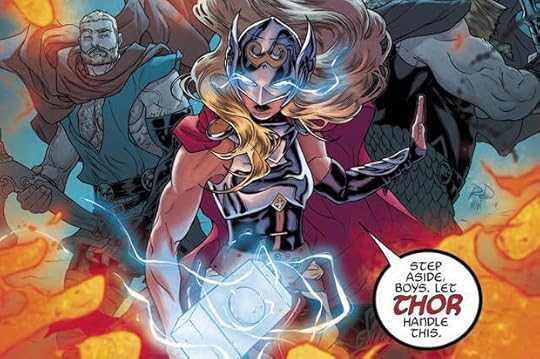
Thor/Jane Foster (Credit: Marvel)
One of the truest clichés of superhero comics is that a replacement hero, subbing for the likes of Superman or Spider-Man, is temporary (along with the sub-cliché that the original white male hero will always be back in time for the latest blockbuster movie, so as not to baffle any casual fans who wander into a comic-book shop).
This cliché has been proven true even when the replacement hero has been a huge artistic and commercial success. When Captain America died during the terrific run of Ed Brubaker and Steve Epting, Bucky Barnes took the shield, and the results were an engrossing espionage series. When Batman was dead (or lost in time or whatever) during Grant Morrison’s 7-year run on the Bat-titles, Dick Grayson became a quippier, more well-adjusted Batman with equal badassness, creating the freshest stories in years. But Bucky and Dick went back to their previous roles of the Winter Solider and Nightwing when Bruce and Steve returned, because that’s how corporate comics roll — in circles, always landing back on the default mode.
Marvel Comics needs to break this cycle.
The company has been replacement-happy as of late, with a new Captain America, Hulk, Iron Man and Wolverine all at the same time. But one replacement has outshone the rest.
Jane Foster’s tenure as Thor, beginning in 2014, has been a rousing success (it’s outsold old male Thor) and a hammer to the face of anti-woman lunkheads. Unfortunately, there are signs that Foster may be headed the way of Bucky and Dick, either through death or a return to secondary-character status. If Thor writer Jason Aaron and his corporate overlords are reading, hear my prayer: by the hammer of Thor, don’t sideline Jane Foster.
Some fans feel diverse character have been shoehorned into older superhero roles, but that criticism is particularly ridiculous when applied to the Asgardian corner of Marvel. A female Thor fits right into the massive epic of Jason Aaron, whose lengthy Thor run (beginning with “God Butcher” in 2012) has been built on Thors, plural, from the start. Writer Aaron (and artist Esad Ribic) began by featuring Thor at three different stages: the stupidity of youth, the relative maturity of adulthood and the jaded weariness of old age. Adding a different gender to the mix broadened an already multifaceted look at godhood.
Female Thor’s identity was originally a mystery, with the first arc running through the possibilities of who she might be till the revelation of Jane Foster—longtime Thor love interest, now a doctor suffering from cancer—as the holder of the hammer. She replaced the usual Thor— now called Odinson—who was no longer worthy of lifting Mjolnir thanks to something more white males could use, self-doubt.
Foster’s life as Thor has been as difficult as the series has been compelling. She’s trying to maintain chemotherapy appointments and her secret identity while fighting misogynistic Asgardian gods and everyone else in a cosmic battle between the various realms of Norse mythology. Thanks to Aaron’s terrific writing and the gorgeous art of Russell Dauterman, the series has been one of Marvel’s best-selling and best-reviewed series.
The commercial success is an especially delicious rebuke to anyone who thinks diversity is killing Marvel. The issue of gender in comics is timelier than ever thanks to a depressing recent incident on Twitter, which should be the name of the Norse realm of the trolls. A group of female Marvel editors were recently blasted with online harassment just for posting a picture of them drinking milkshakes. This picture, no different from thousands posted online every day, somehow drew angry trolls out their holes, issuing rape threats and complaining about how women and SJWs are ruining comics. This burst of ugliness provoked the #makeminemilkshake hashtag, which catalyzed an outpouring of support.
You don’t have to be Heimdall the all-seeing to notice that female Thor is more important than ever in a world where women are treated like garbage, by garbage people, just for daring to work in the comics industry. So let the Odinson keep playing with his ax and keep that hammer right where it is, Marvel.
August 4, 2017
They were just what we needed: Why The Cars matter
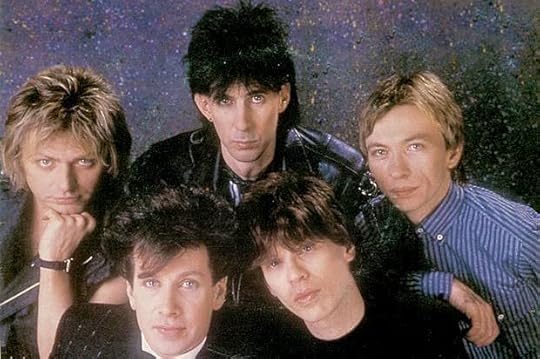
The Cars (Credit: \Elektra)
For fans of new wave innovators The Cars, it’s been a banner year for reissues. On Record Store Day, Rhino Records released “Live at the Agora, 1978,” an archival concert LP that captured the band on the cusp of stardom in vocalist and bassist Ben Orr’s hometown of Cleveland, Ohio. Just last week, expanded versions of the quintet’s second and third records, 1979’s “Candy-O” and 1980’s “Panorama,” hit stores.
These albums are decidedly more offbeat than The Cars’ juggernaut 1978 self-titled debut, which is itself a nervy collection of taut power-pop and future-peering synth-rock. On certain songs — the keyboard-swirled whirligig “Let’s Go,” guitar-frizzled “Since I Held You” and the retro relic “Double Life” — “Candy-O” felt like a bookend to the first record. But in other places, The Cars’ penchant for rapid evolution leads to sonic revelations. The icy, clipped “Shoo Be Doo” is a suicide homage; “Dangerous Type” has a swinging glam groove and hollowed-out keyboards, and the synth-zapped title track feels like sci-fi post-punk.
The Cars would push that electro-shocked style even further into outer space on “Panorama,” one of their worst-selling (but most experimental) records. Today, it’s easy to see why this record felt so jarring: Starting with song one — a Devo-esque six-minute title track with concise robotic flair — and on through tunes such as the arcade-dizzy “Getting Through” and the metallic, proto-industrial closer “Up and Down,” “Panorama” detonates The Cars’ previous playbook. Even the single “Touch and Go,” an explosion of extraterrestrial keyboard accents and stuttering, rhythmic syncopation, is out-of-phase and off-kilter.
In reality, The Cars had been hinting at “Panorama” all along. After all, tucked away near the end of the band’s debut record is the moon-landing synth-pop dirge “Moving In Stereo.” (That song was later made famous by Phoebe Cates in an infamous scene from the ’80s classic “Fast Times at Ridgemont High.”) That song bled right into the confused “All Mixed Up,” whose lighter sound masked the kind of deep-seated emotional tension in which the band specialized.
“Panorama” has its distinct charms, however. It’s a brazenly modern record that makes few concessions to tradition, and the members of The Cars are clearly uninterested in repeating themselves. And there’s a good reason why they sound so confident and willing to take risks: The musicians had finally built up enough goodwill and commercial success to be able to see how far they could push things.
“We did have a certain view of the world: sort of cold but hysterical,” vocalist and rhythm guitarist Ric Ocasek told Rolling Stone in 1980, when questioned about the band’s “widespread notoriety as a troupe of dispassionate, artful technorockers,” as author Mikal Gilmore put it. “Actually, as I look back on it, I think it was probably a protective shield more than anything else. We had abruptly moved from a point in our career of being told, ‘You’re worthless,‘ to, ‘You’re everything.‘ So it wasn’t coldness so much as cold anger: We were angry at the people who had failed to understand us before, and angry over what they suddenly expected from us.”
Later in the article, Ocasek spoke of the press backlash The Cars were then receiving, which didn’t help matters. However, his exasperation over this fickleness spoke to how long the musicians had been striving for success. Orr — born Benjamin Orzechowski and nicknamed Benny “11 Letters” back in Cleveland — had been playing in bands since the mid-’60s, with varying degrees of notoriety. Before the Cars, Ocasek too had been in several groups, including Milkwood (with Orr), Richard and the Rabbits (with Orr and keyboardist Greg Hawkes) and Cap’n Swing, the latter of which also featured guitarist Elliot Easton. Drummer David Robinson, meanwhile, had cut his teeth in the Modern Lovers with Jonathan Richman.
These diverse experiences also explain why The Cars sound so distinct. Orr and Ocasek trade off singing lead vocals, and although their voices are similar — neither are overly expressive in the ways they convey longing or heartbreak — their different timbres add depth. Orr was more of a traditional vocalist, earnest and unadorned, but he balanced his open-hearted nature with marked stoicism. Ocasek’s approach started off somewhat detached, but his voice loosened up over the years. By the time of ’80s hits such as “Magic” and “You Might Think,” he had perfected a rock ‘n’ roll yelp.
The Cars’ instrumentalists balanced out the vocalists. Easton excelled at quick, sharp guitar bursts, and his style was a good match for Robinson’s fastidious style. And keyboard enthusiast Hawkes anchored it all with an open mind. “I think it’s perfectly valid to incorporate new forms of technology into music,” he told Rolling Stone in 1980. “I think of The Cars as an alternative band—an alternative to the stock rock and pop that still dominate radio. We’re definitely not a tradition-based band. As far as I’m concerned, there’s no reason to stick with any rock & roll traditions. What’s the point? Traditions exist so we can go beyond them.”
But it’s also clear that The Cars had to make “Panorama” in order to shake the rabble-rousing out of its system. The band wasn’t necessarily interested in sabotaging its career, mind you, just kicking it down the road a bit to see what was there. Call “Panorama” a chrysalis LP, a brief respite so the musicians could emerge and figure out how their poppier tendencies collided with the advancements they craved.
As the ’80s unfolded, these ambitions aligned in intriguing ways. “Shake It Up” is somewhat quirky-by-numbers pop, but producer Mutt Lange’s influence drenches “Hello Again,” notably in its stacked vocal harmonies. The Cars also benefited enormously from heavy MTV rotation, thanks to technologically advanced videos for “You Might Think” and “Magic.” (Incredibly, this support was literally from day one: MTV aired three videos by the band, “Let’s Go,” “Dangerous Type” and “Double Life,” the day the channel went on the air.) The moody watercolor, “Drive,” is one of the band’s finest moments, while its mellower synth-pop stabs (“You Are The Girl” and the sublime “Tonight She Comes,” initially a bonus track on a 1985 greatest hits compilation) show off a gauzier side. Even the punkish title track on the band’s penultimate album, 1987’s “Door To Door,” bristles with verve.
In a recent conversation-starting ranking of Cars songs, the critic Alfred Soto assessed the group like so: “So influential that they sound as inevitable as Bob Seger or whatever war horse you care to mention, The Cars have a claim to having invented the clever and remunerative moniker ‘New Wave.'” He’s right on all fronts: The band is a near-perfect bridge between ’70s rock and ’80s synth-pop, an era-defining group whose music still sounds like nothing else out there.
However, The Cars are a distinctly American new wave band, one that opened the doors for the U.K. (and beyond) synth warriors to take over the charts. That doesn’t diminish the group’s ’80s popularity, or how astonishing the band’s initial three-album stretch was in terms of sonic originality. The Cars came roaring out of the gate ready and willing to take risks, which remains an accomplishment worth celebrating.
Fall TV: Cable & streaming’s new offerings mitigate a mediocre broadcast season
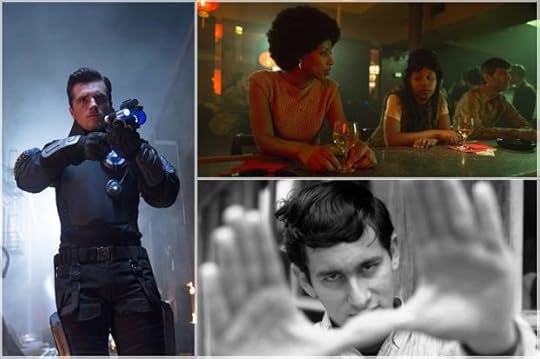
Future Man; The Deuce; Spielberg (Credit: Hulu; HBO)
Hate to break it to you, but most of the new offerings for fall aren’t inspiring much buzz among critics. I can say this with some authority, because many reporters who cover television currently are assembled in Los Angeles for the Television Critics Association’s Summer Press Tour.
Press Tour is a biannual event during which the major broadcast networks, cable channels, PBS and Hulu have appeared or are scheduled to in order to showcase their upcoming offerings to members of the TCA.
Eleven days into this experience this captive audience, consisting of more than 160 reporters, has absorbed hours and hours of dramas and comedies scheduled to debut over the next four and a half months and beyond. And the unscientific consensus is that we’re in for a mediocre fall.
The silver lining here is that many of the scripted series currently airing are at least decent, in some cases great, and when it comes to a select few, peerless. By no means are audiences starving for new content, and that places the onus on networks to bring their A-game to the fall season. This is tough to do in an ecosystem where the bar is consistently being raised and the audience’s attention is shortening.
But this is also a landscape that favors cable channels that can program to specific audiences, subjects and trends. AMC, for instance, is doubling down on catering to fandom by creating a documentary series called “AMC Visionaries,” which is expanding to include “AMC Visionaries: Eli Roth’s History of Horror” and “AMC Visionaries: Rap Yearbook,” both working titles. These series fit AMC’s devotion to “The Walking Dead” and all of its spinoffs and popcorn franchises, and they’re easy sales to an audience that’s already showing up in droves for a genre hit.
Viewers must wait for 2018 to see “Visionaries,” though. Fortunately HBO’s highly anticipated documentary on Steven Spielberg, which makes its debut on Saturday, Oct. 7, should keep film fanatics satisfied until then.
And there’s an assortment of alluring cable series joining the schedule before that, including the ones listed here. In-depth reviews of many if not all of these titles will be published closer to their premieres, but in the meantime, here are a few new comedies and dramas worth anticipating.
“The Deuce.” Premieres Sunday, Sept. 10, at 9 p.m. on HBO. The latest series from David Simon and George Pelecanos stars Maggie Gyllenhaal as a prostitute and James Franco as twin brothers all working in New York’s Times Square in 1971. In this grimy area sex sells in the open and organized crime is moving in on legitimate brick and mortar businesses. Eventually the adult film industry will sprout from these dirty streets.
Gyllenhaal recognizes that the exploitative element of the show will make viewers deeply uncomfortable. However, she said during a panel, “it’s become clear, in a way that maybe it wasn’t totally clear a year ago, that there is a huge amount of misogyny in the world. I think we thought we were in a better place than we were. And here we have this opportunity to pick it up and lay it on the table and to do it in a way that’s thoughtful and smart, I think, and also real.”
“The Opposition With Jordan Klepper.” Premieres Monday, Sept. 25, at 11 p.m. on Comedy Central. Klepper leaves his position as a correspondent for “The Daily Show With Trevor Noah” to host this new series lampooning “alt” news sources taking on the “lame-stream media.” And he’s doing so by creating a fictional version of himself he describes as “Alex Jones meets Garrison Keillor.”
“I’m taken by this idea of the outsider, because the outsider is the new thing,” Klepper told critics. “Donald Trump calls himself as the outsider as he tweets inside the Oval Office. Breitbart was the outside, but Steve Bannon now is in the West Wing. So, who is this outsider other than somebody who is upset and anti-the mainstream, anti-what’s happening, anti-facts?”
“Liar.” Premieres Wednesday, Sept. 27, at 10 p.m. on SundanceTV. In this six-part series, Joanne Froggatt plays a dedicated teacher who goes on a date with a parent of a student at her school (Ioan Gruffudd) that transforms both of their lives.
“It’s such an ambiguous story, and the point of it is that it is ambiguous, and we have to have the audience find out who is lying,” Froggatt said. “So it’s not just laid out there for us.”
“The Last O.G.” Premieres Tuesday, Oct. 24, at 10 p.m. on TBS. In his first TV role since surviving an auto accident that nearly claimed his life, Tracy Morgan leads an all-star cast that includes Tiffany Haddish (“Girls Trip”) and Cedric the Entertainer, in a comedy created and executive produced by John Carcieri and Jordan Peele. Morgan plays an ex-con who returns to his gentrified Brooklyn neighborhood after a 15-year prison stint to find a vastly changed world, and the clips we’ve seen show a series that strikes a balance between the emotional and the hilarious.
“This isn’t a black show. This is a show about humanity,” Morgan said in a press conference. “This is a show about second chances. This is a show about redemption… . There’s black people in it, but this is dealing with Josh and his issues and all that, the humanity. I wanted to transcend that. Black people ain’t the only ones that live here. Everybody lives here.”
“At Home With Amy Sedaris.” Premieres Tuesday, Oct. 24, at 10:30 p.m. on TruTV. Sedaris, best known for her various appearances on David Letterman and as the legendary Jerri Blank of “Strangers With Candy,” channels her love of the domestic arts into a series that both parodies and celebrates crafty culture. Sedaris is basing her series on a local show she grew up watching on a North Carolina station called “At Home With Peggy Mann.” But where that show was, according to Sedaris, boring, black-and-white and amateurish, her “At Home” explodes with color and ebullient lunacy.
And Sedaris makes it clear that she is offering no competition to Martha Stewart. “I really like Martha. But I was never inspired by her show,” Sedaris said. “I was more inspired by, you know, the Two Fat Ladies and ‘The Galloping Gourmet,’ ‘Frugal Gourmet,’ Julia Child, you know . . . Dinah Shore. The throwbacks. Martha just always seemed like a little too new for me, so I never really got into Martha. But hats off to her. I just can’t do everything.”
“Future Man.” Premieres Nov. 14 on Hulu. In another example of movie stars expanding their small-screen footprint, this frothy, fun series executive produced by Seth Rogen and Evan Goldberg as well as Kyle Hunter and Ariel Shaffir, stars Josh Hutcherson (“The Hunger Games”) as a janitor tasked to travel through time and save the world, assisted by a pair of hardened warriors (Eliza Coupe and Derek Wilson). And it’s surprisingly charming.
Speaking to a question of why apocalyptic programming is so appealing these days, Hutcherson explained that the scenario is designed to test a person’s mettle. “You kind of see what you’re made of and see how you react,” he said. “It’s a very rich, fertile environment for great characters.”
No, Justin Bieber’s remix of “Despacito” isn’t innovative, it’s racial tourism at its worst
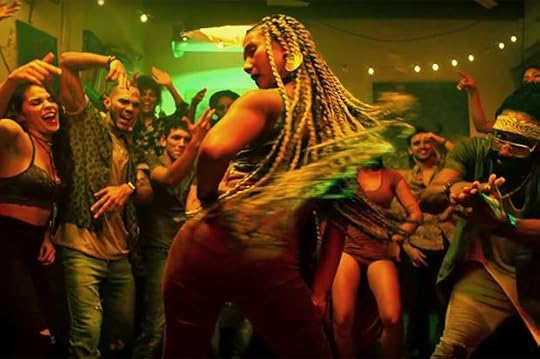
Despacito - Luis Fonsi ft. Daddy Yankee (Credit: Youtube)
If you can walk outside of your house without hearing “Despacito” at least one time, consider yourself lucky. The Luis Fonsi and Daddy Yankee track hasn’t stopped playing since the remix featuring Justin Bieber was released back in April, officially making it 2017’s “song of the summer.”
More than that, though, the track is effectively demonstrating the pervasive nature of cultural appropriation in the pop music industry.
Since its emergence onto the charts, the awfully infectious tune has remained the No. 1 single for 12 weeks straight — the first song to do so since Mark Ronson’s “Uptown Funk” in 2015. And now, “Despacito” — which translates to ‘”slowly” — has become the most-streamed song of all time, beating out Bieber’s hit single “Sorry.” To put that in perspective, the song is the first Spanish-speaking track to top the charts since Los Del Río’s infamous “Macarena,” back in 1996.
However, the song’s success has not come without complications — some of which can be attributed to Bieber’s propensity for acting impetuously.
On three separate occasions since the track was released, Bieber made it clear he didn’t know the words to the song he asked to be featured on. In May, a video of the Canadian pop star drunkenly singing “Despacito” surfaced — on which he replaced the lyrics with words like “burrito” and “dorito.”
Later that month, Bieber swapped the original lyrics for a more expressive line during an Instagram live story: “na ba da ba da ba da ba da ba de bo.” And just one month later, the Biebs proved — yet again — his inability to respect the culture that practically gave him his latest hit single. In June, he refused to perform the song during Sweden’s Summerburst Festival, explaining to fans he “can’t do ‘Despacito’ because I don’t even know it.”
It is important to note the issue does not lie in his inability to speak Spanish fluently. The trouble arises in his continued disregard for the importance of the song’s success to the Latino music industry as a whole, which is made most apparent through his imitations of the track.
“I don’t blame him for not knowing the words in Spanish, but his mockery of the language is completely unacceptable,” said Richard Mondolfi in a scathing critique for Huffington Post. “Justin Bieber has shown he can’t sing in Spanish without making fun of it, so he simply shouldn’t. I, for one, won’t listen to ‘Despacito’ remix ever again, and I hope you won’t either.”
Although Bieber’s transgressions may appear to be minuscule in comparison to the success the track has amassed, his actions highlight a greater issue within the pop music genre where cultural exchange is scarce, while the appropriation of such is commonplace. In the case of “Despacito,” Bieber’s appearance on the track has awarded him praise, specifically because he has relied on racial stereotypes and bizarre approximations of Latino culture to stumble his way through two short verses. And, even after he was called out for mocking the Spanish language, he was labeled as a “latin king,” in an ad for Spotify — one that was later taken down after an outpouring of fury from social media users.
Situations such as Bieber’s mocking of the Spanish language — and the praise he received for doing so — have paved the way for the continuity of cultural appropriation in music, specifically in the pop genre. He’s far from the only pop star who has reaped the benefits of exploiting another culture to appeal to consumers.
From Gwen Stefani’s perpetuating Japanese stereotypes through her “Harajuku Girls” in 2004, to Miley Cyrus’ recent abandonment of black culture because it was no longer profitable for her, the pop music industry has demonstrated that seizing another culture is A-OK, as long as it is beneficial to the wallets of record labels and artists alike.
WATCH: “Fun Mom Dinner” was made by women, and it was “glorious” on set
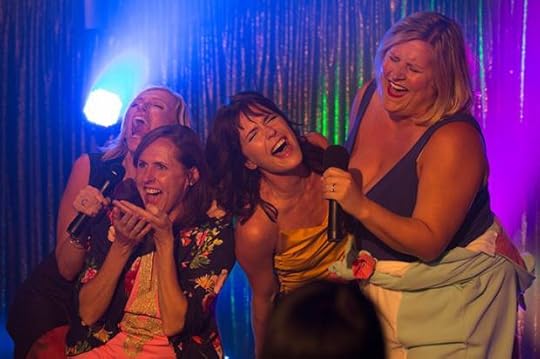
When you put four moms whose only common ground is their kids and preschool class together for a ladies’ night out — a “Fun Mom Dinner” — hijinks abound. In the new film by writer Julie Rudd, the night begins as a discordant mess of conflicting personalities, but when the women throw in booze, karaoke and a cute bartender (“Maroon 5’s” Adam Levine), the post-dinner actually becomes fun. In this story about modern sisterhood, by the wee hours of the morning these very different women realize they actually have more in common than kids and husbands.
The cast and director spoke to Salon recently about how working with a nearly all-woman cast and crew made the filmmaking as fun as the dinner was supposed to be.
“‘Fun Mom Dinner’ was populated by so many women both in front of and behind the camera,” director Althea Jones wrote in the film’s press materials. “What made me happy about this is that it wasn’t some kind of deliberate mandate, we simply chose the best people for the job. On the last night, I turned around . . . and it was just full of women, all huddled around the monitors focusing intently on the scene. I got a little emotional. I’m not used to working with so many women and it was kind of glorious.”
The actresses in the film, Toni Collette, Katie Aselton, Molly Shannon and Bridgett Everett, all of whom are principally comedic actresses, thought about working with women and if it’s true that it changes the atmosphere on set.
“I think it’s super warm and comfortable, relaxed and at home,” said Everett, who also appeared in “Trainwreck.” “I haven’t really felt like that before.”
“There was never an angry outburst,” added Aselton, who stars in FX’s “The League.”
Collette, whose career has spanned several decades since her break-out role in “Muriel’s Wedding,” agreed. “It was a really great experience, and a lot of talented, 0bviously smart women who were great communicators. It was a very shared experience.”
Watch our conversation for more on “Fun Mom Dinner.”
Right-wing media and Russian bots unite to target Trump’s national security adviser
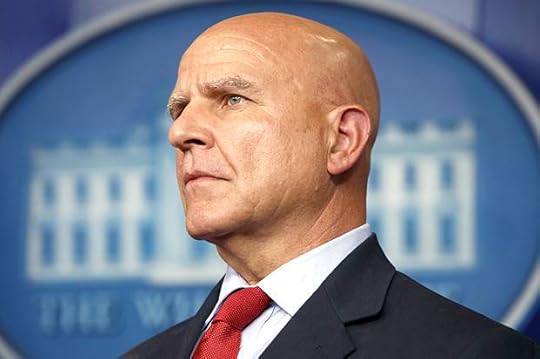
H.R. McMaster (Credit: AP/Evan Vucci)
All of the president’s men may now be generals — but that doesn’t mean that they’ve all been rewarded with the praise from Donald Trump’s base befitting loyal soldiers running into a losing battle. Following yet another week of drama surrounding high-profile staff shake-ups, the White House is now fending off an intraparty barrage of attacks against Trump’s top national security adviser, H.R. McMaster.
The retired three-star Army lieutenant general, with the reported blessing of the newly installed chief of staff John Kelly (yet another retired general), dismissed several officials who joined the administration under another general — Michael Flynn. Even as the White House appeared overcome by the resignations of two communications directors and a chief of staff in rapid succession, McMaster has carried out his months-long quest to clear Flynn’s baggage.
“McMaster basically has this list and over the next two weeks he’s going to phase out” more senior officials loyal to Trump, an unnamed source told the conservative Free Beacon. “They’re taking out people who were chosen to best implement the president’s policy that he articulated during the campaign.”
McMaster continued clearing house this week, firing top national security administration officials, Ezra Cohen-Watnick, Rich Higgins, and Derek Harvey — and exacerbating the already splintered White House.
The dismissals of Ezra Cohen-Watnick, the National Security Council’s controversial 31-year-old senior director for intelligence, particularly pissed off allies of Trump’s more nationalist policies in and out of the White House. McMaster had long sought to dismiss Cohen-Watnick, who clashed with some other members of the council, but was prevented after interventions by Trump’s chief White House strategist, Steve Bannon.
It’s little surprise, then, that conservatives and Russian bots have taken notice of McMaster’s latest moves.
A critical Breitbart column was tweeted by Mike Cernovich, a leading figure in the alt-right movement who called McMaster “a Deep State Plant”:
https://twitter.com/Cernovich/status/...
Cernovich also set up a website this week called McMaster Leaks.
A day after news of Cohen-Watnick’s dismal broke, the Daily Caller ran an “exclusive” that cited unnamed former senior NSC officials who claimed, “Everything the president wants to do, McMaster opposes.” The right-wing website founded by Fox News’ Tucker Carlson, interviewed a former Trump administration official who said: “the president isn’t a big fan of what McMaster’s doing.”
Also on Thursday, the newest Trump cheerleading right-wing website Circa published a leaked letter written earlier this year extending former national security adviser Susan Rice’s security clearance. President Barack Obama’s final national security adviser has long been a target of right-wing media and conservatives in Congress.
What is this? Does H.R. McMaster need to go? Susan Rice? Omg https://t.co/yvw9thaiah
— Sean Hannity (@seanhannity) August 3, 2017
Retired Army Colonel Pete Mansoor, who worked closely with McMaster, told Politico that “there is a split in the White House between the Bannon camp of ideologues and the McMaster-Mattis-Tillerson camp of more centrist intellectuals.”
America needs Rich Higgins in office, not HR McMaster.
— Frank Gaffney (@frankgaffney) August 3, 2017
Most interestingly, attacks on McMaster from right-wing media figures coincide with a coordinate troll campaign, according to a newly launched website that tracks Russian propaganda. Using hashtags like #FireMcMaster and #deepstate, accounts linked to Russian-backed bot campaigns shared several anti-McMaster stories this week.
McMaster Thwarting Trump's Foreign Policy https://t.co/dldCIDVo5d
— Laura Ingraham (@IngrahamAngle) August 4, 2017
#FIREMCMASTER https://t.co/dGlR9LYqXK
— Cassandra Fairbanks (@CassandraRules) August 3, 2017
https://twitter.com/JackPosobiec/stat...
Norman Lear doesn’t want to be honored by Donald Trump
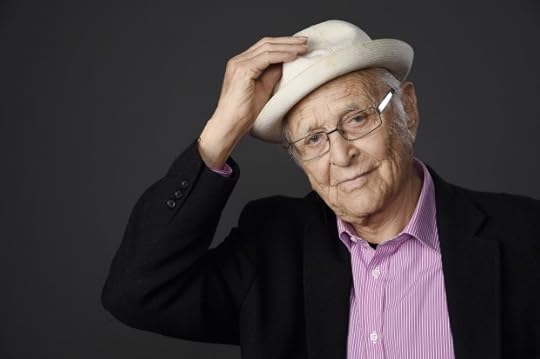
Television writer and producer Norman Lear, the subject of an "American Masters" documentary that will air on PBS in 2016, poses for a portrait during the 2015 Television Critics Association Summer Press Tour at the Beverly Hilton on Saturday, Aug. 1, 2015, in Beverly Hills, Calif. (Photo by Chris Pizzello/Invision/AP) (Credit: Chris Pizzello/invision/ap)
Television icon Norman Lear is finally being awarded with a Kennedy Center Honor at the age of 95. But because of his dislike and disapproval of Donald Trump, he has decided to not attend the White House reception.
Lear — the genius behind T.V. sitcoms like “All in the Family” and “The Jeffersons” — is set to boycott the Dec. 3 reception honoring those in performing arts for their dedication to, and achievements in, American culture. In addition to Lear, the 40th annual awards ceremony will recognize Lionel Richie, Gloria Estefan, Carmen de Lavallade, and LL Cool J — the first solo rap artist to be an honoree.
Lear’s boycott isn’t the first time he has been outspoken about his feelings toward Trump. Throughout the election, many news outlets compared Trump to Archie Bunker, the famously fulsome bigot featured on Lear’s show “All in the Family.” However, Lear made it clear that it wouldn’t be fair to Bunker to agree with that assessment.
“I think Donald Trump is shrewd in a way Archie never was,” Lear told the Daily Beast. “Archie Bunker was far wiser of heart. Sure, the thoughts he held were antediluvian. But Donald Trump is a thorough fool, having nothing to do with the shrewdness that has allowed him to cheat and steal the way he has for his own good. Underneath that, he is a fool.”
Representatives of Lear have released a statement on his decision to snub the White House reception, explaining “Mr. Lear is thrilled to receive a Kennedy Center Honor this year. Although he has clearly stated he will not be attending the White House reception he looks forward to attending the Awards Gala at the Kennedy Center on December 3rd and ‘wouldn’t wish to be anywhere else that night.’”
Although Lear will not be attending the reception to celebrate this milestone, he will join the ranks of Barbara Streisand, Robert De Niro, and Meryl Streep who all have been recipients of the honor.



